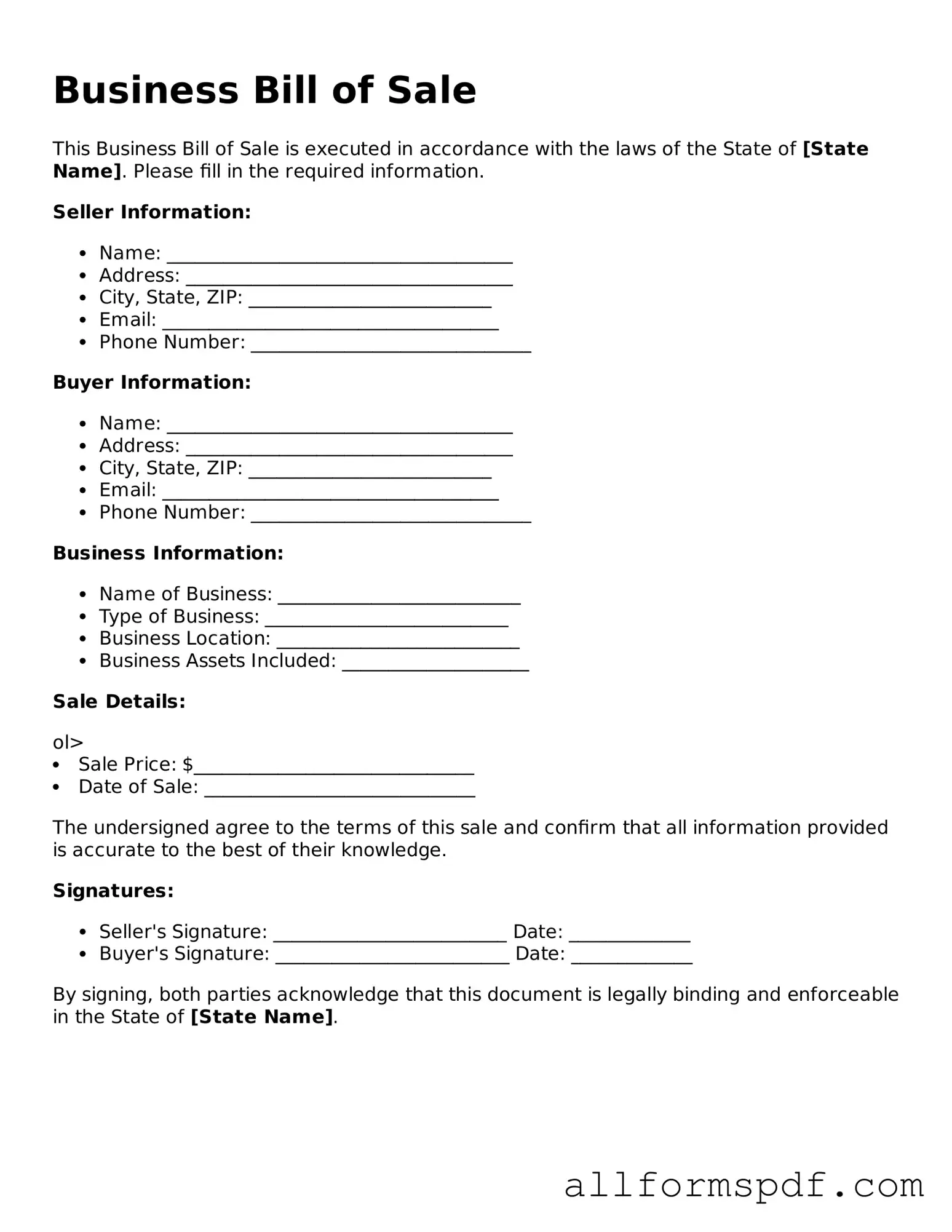Printable Business Bill of Sale Form
A Business Bill of Sale form is a legal document that facilitates the transfer of ownership of a business or its assets from one party to another. This form outlines key details such as the names of the buyer and seller, a description of the business or assets, and the sale price. By using this document, both parties ensure that the transaction is clear and legally binding.
Create My Business Bill of Sale Now
